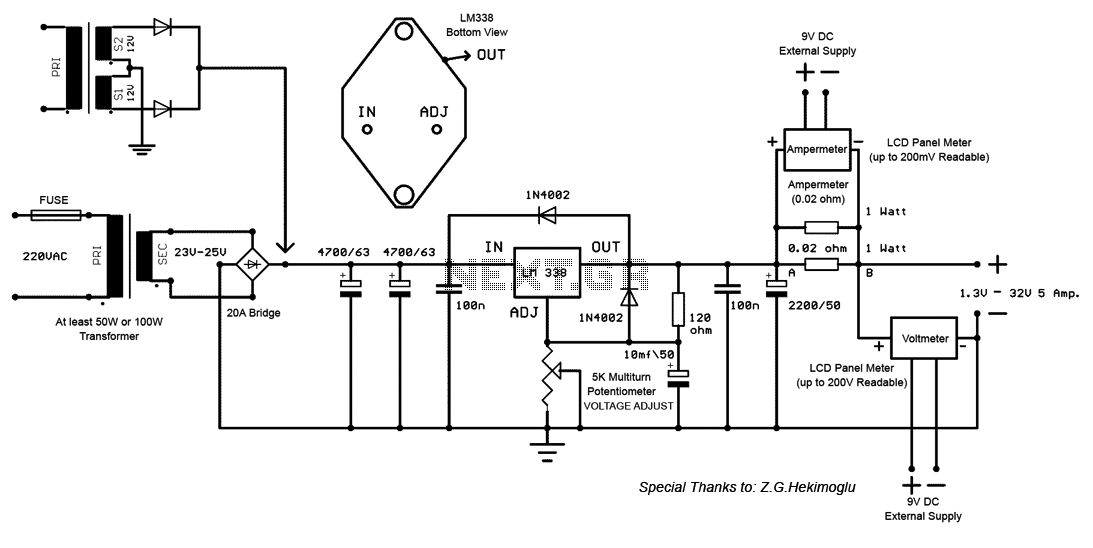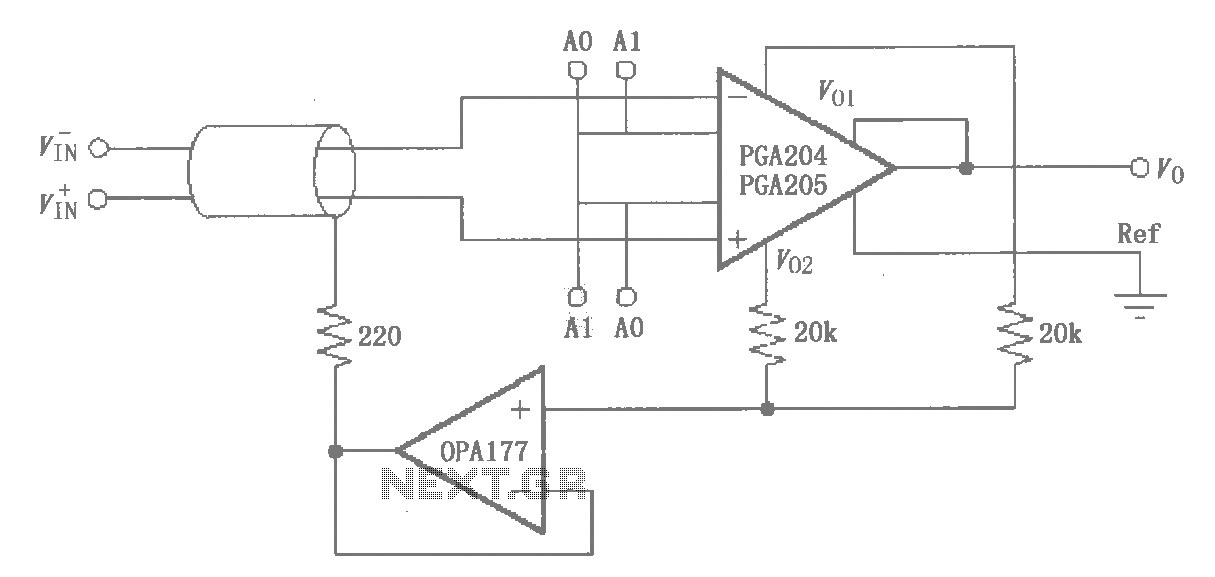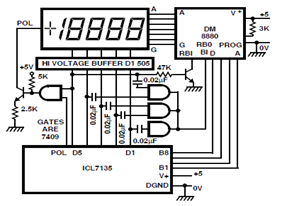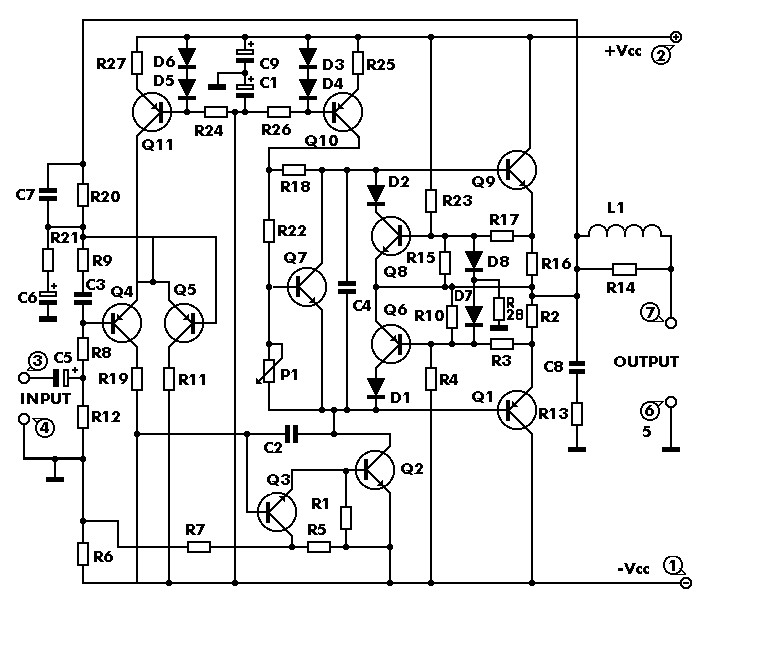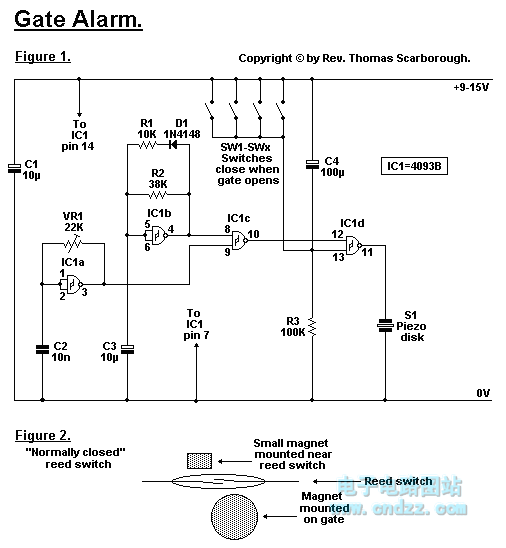
Metal Detector circuit
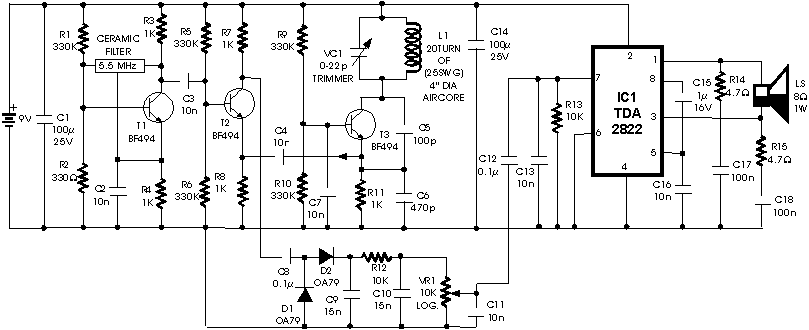
The circuit described here is that of a metal detector. The operation of the circuit is based on the superheterodyning principle, which is commonly used in superhet receivers. The circuit utilizes two RF oscillators. The frequencies of both oscillators are fixed at 5.5 MHz. The first RF oscillator comprises transistor T1 (BF 494) and a 5.5 MHz ceramic filter commonly used in the TV sound-IF section. The second oscillator is a Colpitts oscillator realized with the h.
The metal detector circuit employs the superheterodyne principle, which allows for the effective detection of metallic objects by mixing two radio frequency signals. The first RF oscillator, featuring the BF 494 transistor, generates a stable frequency of 5.5 MHz. This frequency is filtered using a ceramic filter designed for television sound intermediate frequency (IF) applications, which ensures that only the desired frequency components are passed through, enhancing the circuit's selectivity and sensitivity.
The second RF oscillator, configured as a Colpitts oscillator, also operates at the same frequency of 5.5 MHz. Colpitts oscillators are known for their stability and simplicity, utilizing a combination of capacitors and inductors to establish oscillation. This oscillator contributes to the mixing process, where the two RF signals interact to produce an intermediate frequency signal that can be further processed.
The overall architecture of the circuit includes a mixer stage where the outputs of the two oscillators are combined. This mixer stage is crucial as it generates a beat frequency that corresponds to the presence of metal objects within the detection range. The output from the mixer is then amplified and filtered to isolate the desired signal, which is subsequently sent to a demodulation stage for further analysis.
Power supply considerations for the circuit involve ensuring that the BF 494 transistor and the Colpitts oscillator are adequately powered while maintaining low noise levels to avoid interference with the detection process. Proper grounding and shielding techniques should be implemented to minimize noise and enhance the circuit's performance.
In summary, the metal detector circuit utilizes two fixed frequency RF oscillators based on the superheterodyne principle, leveraging a BF 494 transistor and a Colpitts oscillator to effectively detect metallic objects by processing the mixed signals and generating a detectable output.The circuit described here is that of a metal detector. The opera- tion of the circuit is based on superheterodyning principle which is commonly used in superhet receivers. The circuit utilises two RF oscillators. The frequencies of both oscillators are fixed at 5.5 MHz. The first RF oscillator comprises transistor T1 (BF 494) and a 5.5MHz ceramic filter commonly used in TV sound-IF section.
The frequencies of both oscillators are fixed at 5.5 MHz. The first RF oscillator comprises transistor T1 (BF 494) and a 5.5MHz ceramic filter commonly used in TV sound-IF section. The second oscillator is a Colpitts oscillator realised with the h 🔗 External reference
The metal detector circuit employs the superheterodyne principle, which allows for the effective detection of metallic objects by mixing two radio frequency signals. The first RF oscillator, featuring the BF 494 transistor, generates a stable frequency of 5.5 MHz. This frequency is filtered using a ceramic filter designed for television sound intermediate frequency (IF) applications, which ensures that only the desired frequency components are passed through, enhancing the circuit's selectivity and sensitivity.
The second RF oscillator, configured as a Colpitts oscillator, also operates at the same frequency of 5.5 MHz. Colpitts oscillators are known for their stability and simplicity, utilizing a combination of capacitors and inductors to establish oscillation. This oscillator contributes to the mixing process, where the two RF signals interact to produce an intermediate frequency signal that can be further processed.
The overall architecture of the circuit includes a mixer stage where the outputs of the two oscillators are combined. This mixer stage is crucial as it generates a beat frequency that corresponds to the presence of metal objects within the detection range. The output from the mixer is then amplified and filtered to isolate the desired signal, which is subsequently sent to a demodulation stage for further analysis.
Power supply considerations for the circuit involve ensuring that the BF 494 transistor and the Colpitts oscillator are adequately powered while maintaining low noise levels to avoid interference with the detection process. Proper grounding and shielding techniques should be implemented to minimize noise and enhance the circuit's performance.
In summary, the metal detector circuit utilizes two fixed frequency RF oscillators based on the superheterodyne principle, leveraging a BF 494 transistor and a Colpitts oscillator to effectively detect metallic objects by processing the mixed signals and generating a detectable output.The circuit described here is that of a metal detector. The opera- tion of the circuit is based on superheterodyning principle which is commonly used in superhet receivers. The circuit utilises two RF oscillators. The frequencies of both oscillators are fixed at 5.5 MHz. The first RF oscillator comprises transistor T1 (BF 494) and a 5.5MHz ceramic filter commonly used in TV sound-IF section.
The frequencies of both oscillators are fixed at 5.5 MHz. The first RF oscillator comprises transistor T1 (BF 494) and a 5.5MHz ceramic filter commonly used in TV sound-IF section. The second oscillator is a Colpitts oscillator realised with the h 🔗 External reference
